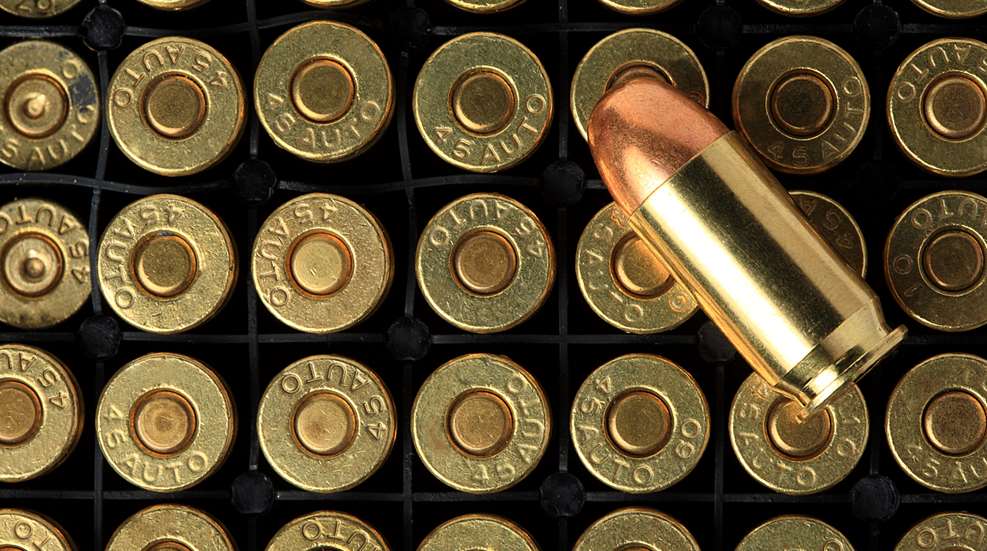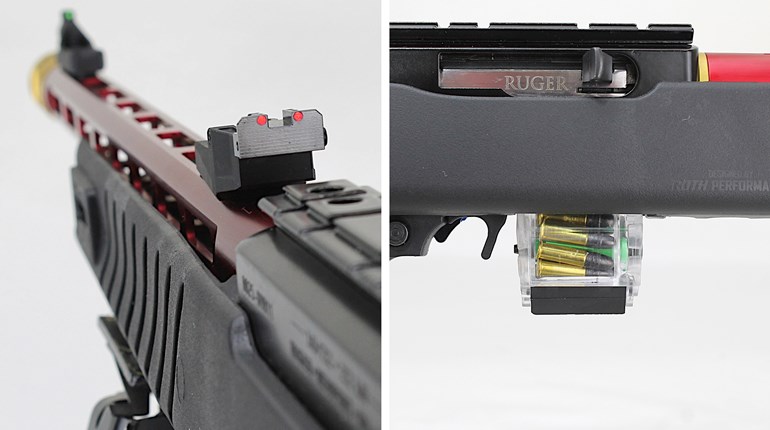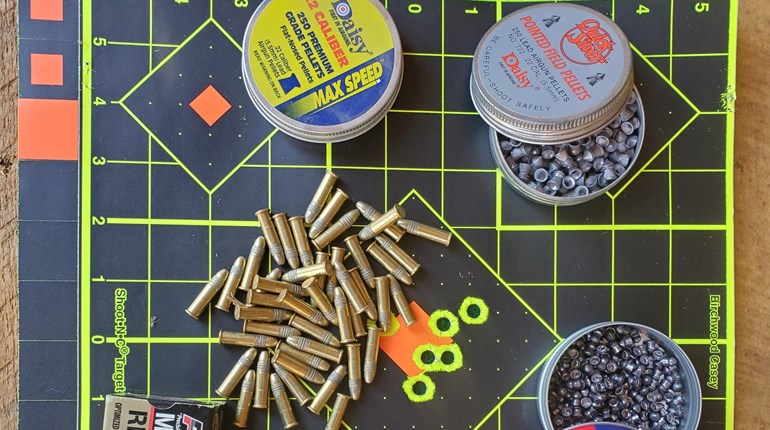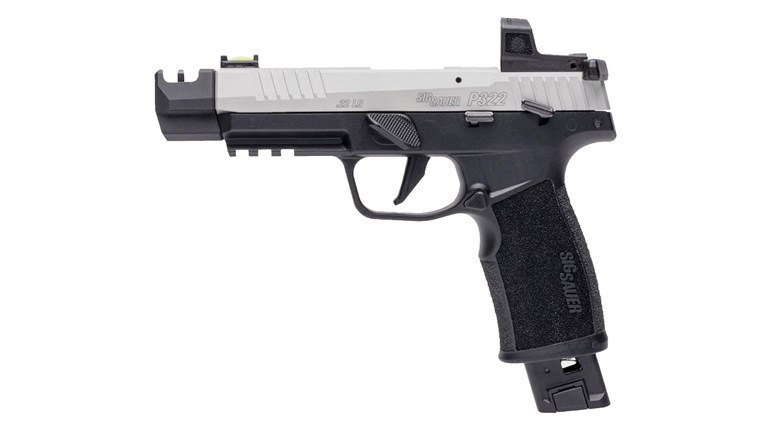
I was born under the astrological sign of Capricorn. Much to my mother’s delight, I came into the world on January 1. And like many other Capricorns, I am a very persistent, ambitious person. So since I started shooting handguns years ago, I have been slowly but methodically moving up the line in calibers.
For those not familiar with handgun calibers, here’s a list of the most common types, starting with the lowest cartridge power:
.22 LR, .380 ACP, 9 mm, .38 Spl., .357 Mag, .40 S&W, .44 Mag., .45 ACP
The first handgun I purchased was a Ruger Mark III Hunter .22, followed by several 9 mms, then finally a behemoth of a gun I nick-named “Bertha”—she’s a Smith & Wesson .357 Mag., 7-shot, 6” barrel revolver. Bertha has taught me a lot! After shooting Bertha, I was ready for just about anything in life!
So how do you know when you’re ready to move up in calibers? Read my lessons learned—not only from my own NRA Instructor training, but also from Bertha.
Why Move Up in Caliber
The first question you need to ask yourself is why you want to move up in caliber? After listening to my students over the years, I have found the main reasons why they want to move up in caliber is any one or combination of the following reasons: boredom, desire to increase shooting skill, self-protection, competitive shooting, and hunting.
If you are getting bored with your current caliber and want to boost your shooting skills, yes, by all means, rent a higher-caliber handgun and see if you like it. That’s the main reason that pushed me to jump from the 9 mms up to Bertha. I always rent guns before I buy them. That way, if I don’t like it, I’m only out a few bucks instead of hundreds.
One thing to keep in mind when upgrading calibers for self-protection is accuracy versus stopping power. Most of my students shoot much better with a .22 than a .40 cal, but low calibers have much less stopping power than high calibers. For example, the average .22 cartridge has a one-shot stop percentage of about 25 percent; that means 75 percent of the time, you’re going to need to keep shooting to stop the threat. Compare that with a .40 cal that has a one-shot stop percentage of about 90 percent.
Moving up in caliber for competing and hunting are self-explanatory (higher caliber, bigger game), so I won’t spend too much time on that here.
Whatever the reason, keep in mind that it takes plenty of practice to shoot well with any firearm. Don’t put too much pressure on yourself when you’re moving up in caliber. If it’s one thing I’ve noticed, my beginner female students want to shoot extremely well right away, where the beginner male students don’t have such high expectations of themselves. Put yourself first for a change, and make the time to go shooting as often as you can. Like anything else in life, practice makes perfect.
Most of my students are beginner females, and if it’s one comment I hear over and over again, it’s that shooting builds their confidence and self-esteem. In addition, the higher caliber gun they shoot, the better they feel about themselves because they stepped out of their comfort zone and overcame a fear. Plinking away with a .22 is one thing, but blasting away with a .45-cal. firearm is another!
How to Move Up in Caliber
No matter what your reasons are, here’s how you can move up in caliber:
Master the fundamentals. Learn the basics, such as proper stance, grip, sight alignment, sight picture, breath control, trigger control and follow-through. Some of my students improve right away, but most take months of shooting twice a month to master the fundamentals.
Work on your group placement. The goal of any target practice session is to create a grouping on the paper target about the size of your fist. You can work on moving that grouping if it’s away from the bullseye, but the goal is the same. The smaller the grouping, the better. When I started target practicing with my Ruger .22, and eventually was shooting out the bullseye on the target, I knew it was time to move on. I applied the same principle to all my guns as I moved up in caliber.
Correct shooting errors. Generally, pistol shooting errors may be traced to either a lack of consistency, or a lack of proper form. Consistency refers to the ability to perform an action in exactly the same way, time after time. Proper form refers to the manner in which an act, such as aiming, holding the pistol, or pulling the trigger, is performed.
If your shots are low and to the left, you might be jerking the trigger. Jerking the trigger results when the shooter attempts to fire the shot at the exact instant the moving sights cross the target. Slow down, take a breath, and work on a trigger squeeze that comes straight rearward and not sideways.
If your shots are directly to the left of the bullseye, you might be “fingering.” This occurs when the trigger finger is not placed properly on the trigger, makes contact with the pistol frame, or is pulled sideways and not straight back to the rear.
If your shots are down and to the right of the bullseye, you need to work on your grip. Grip errors occur when the shooter drops the gun slightly downward at the moment the trigger is pulled in an effort to counteract the upward movement of the recoiling pistol. A good way to check for this is to have someone watch you shoot or videotape you while shooting to make sure you are not dropping the gun while pressing the trigger. Also, be sure you are chocking up on the gun, so there is no space between the web of your hand and the gun’s backstrap.
Strengthen your grip. If you have a strong grip, the sky’s the limit when it comes to handgun caliber. There are several exercises you can do to build forearm and hand strength, such as reverse curls, exercising with a gripper, and squeezing a tennis ball.
We are on this journey together. My husband gave me a Cabela’s gift card for my birthday this year; I have been preparing for my next pistol purchase by renting various .40- and .45-cal. handguns. Stay tuned!
About the Author: Maureen P. Sangiorgio is an NRA-Certified Firearm Instructor/Range Safety Officer.















































